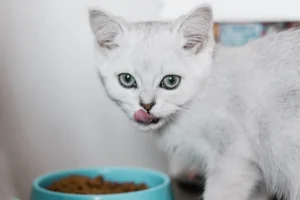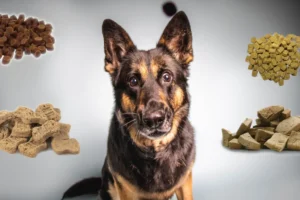Have you noticed your cat experiencing yellow diarrhea and are wondering why? Let’s explore the potential reasons behind this concerning issue.
When your cat has yellow diarrhea, it could be a sign of underlying health issues that need to be addressed promptly to ensure your feline friend’s well-being.
Dietary Factors
Has your furry friend been a little adventurous with their food choices lately? Changes in diet can definitely impact your cat’s digestive system, potentially leading to yellow diarrhea. Introducing new foods or treats abruptly can throw off their delicate stomach balance, resulting in unusual stool colors. Keep an eye out for any food sensitivities your cat may have developed. Just like us, our feline companions can have intolerances to certain ingredients, causing gastrointestinal upset.
If you suspect that your cat’s yellow diarrhea is linked to their diet, consider gradually transitioning them to a new food to see if their symptoms improve. Opt for high-quality, easily digestible options to support their digestive health. Additionally, consulting with your veterinarian can help pinpoint any specific dietary triggers contributing to the issue.
Bacterial Infections
When it comes to yellow diarrhea in cats, bacterial infections can be a sneaky culprit. Pathogens like salmonella or E. coli can wreak havoc on your cat’s gastrointestinal system, leading to abnormal stool colors. These infections can be contracted through contaminated food, water, or exposure to infected animals.
If you suspect that your cat may have a bacterial infection causing their yellow diarrhea, prompt veterinary intervention is crucial. Your vet can perform diagnostic tests to identify the specific bacteria responsible and prescribe the appropriate treatment, which may include antibiotics or supportive care. Remember, identifying and addressing bacterial infections early on is key to ensuring your cat’s swift recovery and overall well-being.
Adding a unique insight to the section on bacterial infections: – Adequate hygiene practices can also play a significant role in preventing bacterial infections in cats. Ensuring your cat’s living environment is clean and sanitized can help reduce their risk of exposure to harmful pathogens. Additionally, practicing good hygiene when handling your cat’s food and water dishes can further minimize the chances of bacterial contamination.
Parasites
If your cat is experiencing yellow diarrhea, parasites may be to blame. Giardia, a common intestinal parasite, can cause yellowish stool in cats. Additionally, worms such as roundworms or hookworms can lead to changes in stool color. It’s essential to consult your veterinarian for proper testing and treatment. Fecal tests can confirm the presence of parasites, and your vet can prescribe the appropriate medication to eliminate them. Remember to clean your cat’s living environment thoroughly to prevent re-infection.
Liver Problems
Liver issues can also present as yellow diarrhea in cats. The liver plays a crucial role in digestion and metabolism, so liver dysfunction can impact stool color. If you notice your cat’s stool turning yellow, it’s crucial to seek veterinary intervention promptly. Your vet may recommend blood tests to assess liver function and determine the underlying cause. Treatment may involve specialized diets, medications, or other interventions to support liver health. Early detection and treatment of liver problems are key to managing your cat’s condition effectively.
Additional Unique Insight:
Dietary Changes : In some cases, yellow diarrhea in cats can be linked to dietary changes. Abrupt shifts in diet, consumption of spoiled food, or food intolerances can lead to digestive upset and changes in stool color. Ensure you are feeding your cat a well-balanced diet appropriate for their age and health status. If you suspect diet-related issues, gradually transition your cat to a new food and monitor their stool for improvements. Consulting with your veterinarian can help you determine the best diet for your cat’s digestive health.
Pancreatitis
When it comes to why your cat might have yellow diarrhea, one possible cause is pancreatitis. This condition involves inflammation of the pancreas, which can disrupt the normal digestive process and lead to yellowish stool. In cats, pancreatitis can be triggered by various factors such as diet, infections, or certain medications. To alleviate symptoms and manage pancreatitis in your cat, it’s crucial to work closely with your veterinarian. They may recommend dietary changes, medications, or even hospitalization for severe cases. By following their guidance and monitoring your cat’s condition closely, you can help alleviate discomfort and promote healing.
Stress and Anxiety
Ever wondered why your cat is experiencing yellow diarrhea? Stress and anxiety can play a significant role in disrupting your cat’s digestive system, leading to changes in stool color. Cats are sensitive creatures and can be easily stressed by changes in their environment, routine, or even interactions with other pets. To reduce stress levels in your cat and prevent yellow diarrhea, it’s essential to create a calm and stable environment. Provide plenty of hiding spots, interactive toys, and regular playtime to keep your cat stimulated and engaged. Additionally, consider pheromone diffusers or calming supplements to help ease anxiety levels in your furry friend. By addressing stressors and promoting a sense of security, you can help your cat’s digestive system function smoothly and prevent yellow diarrhea.
Additional Unique Insight:
– Probiotics: Introducing probiotics into your cat’s diet can help restore the balance of good bacteria in their gut, potentially reducing the risk of digestive issues like yellow diarrhea. Talk to your veterinarian about the right probiotic supplement for your cat’s specific needs.
Dehydration
If your cat is experiencing yellow diarrhea, dehydration could be a contributing factor. Cats are notorious for being picky drinkers, and inadequate water intake can lead to dehydration, resulting in changes to the color and consistency of their stool. To encourage increased water consumption, consider offering wet food, running a pet water fountain, or adding water to their dry food. Ensure that clean, fresh water is always readily available to help prevent dehydration and promote overall digestive health.
Fun Fact: Cats have a shorter digestive tract compared to humans, which means food passes through their system more rapidly. This quick process can sometimes lead to issues like diarrhea, including yellow diarrhea, due to insufficient absorption of bile salts. By ensuring your cat stays hydrated, you can help maintain a healthy digestive system and potentially lessen the chances of yellow stool occurrences.
Digestive System Insights
Understanding the unique digestive system of cats can shed light on why they may experience yellow diarrhea. Cats are obligate carnivores, meaning their diet primarily consists of meat. As a result, their digestive systems are designed to process high-protein meals efficiently. However, sudden dietary changes or consuming foods that do not agree with their system can lead to digestive upset, including yellow diarrhea. It’s important to introduce new foods gradually and provide a balanced diet tailored to your feline friend’s needs.
Interesting Fact: Unlike humans, cats lack enzymes to efficiently break down carbohydrates. This divergence in digestion could explain why certain foods high in carbohydrates may cause digestive issues in cats, potentially resulting in abnormal stool colors like yellow diarrhea.
- Ensure your cat has access to clean, fresh water at all times to prevent dehydration.
- Monitor your cat’s diet and introduce new foods gradually to prevent digestive disturbances.
- Consider seeking veterinary advice if your cat’s yellow diarrhea persists or is accompanied by other concerning symptoms.
- Brush up on cat nutrition basics to provide a well-rounded diet that supports your feline companion’s digestive health.
Remember, your cat’s well-being is a top priority, so staying informed about their unique digestive system can help you address issues like yellow diarrhea effectively.
Alex, a passionate animal lover, has experience in training and understanding animal behavior. As a proud pet parent to two dogs and three cats, he founded AnimalReport.net to share insights from animal experts and expand his knowledge of the animal kingdom.




